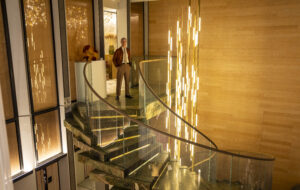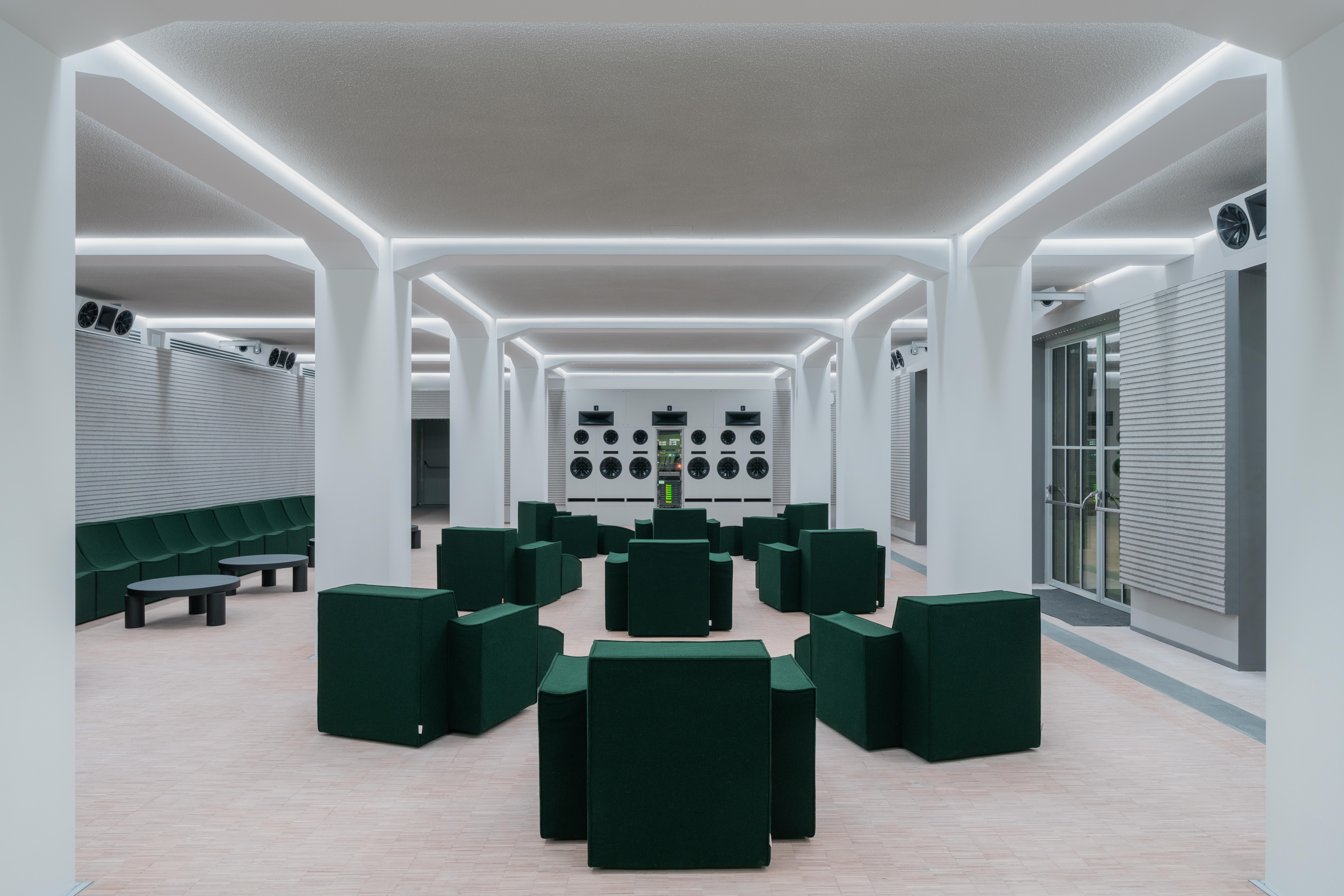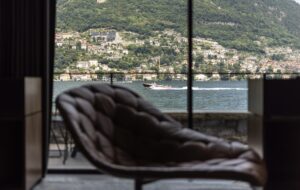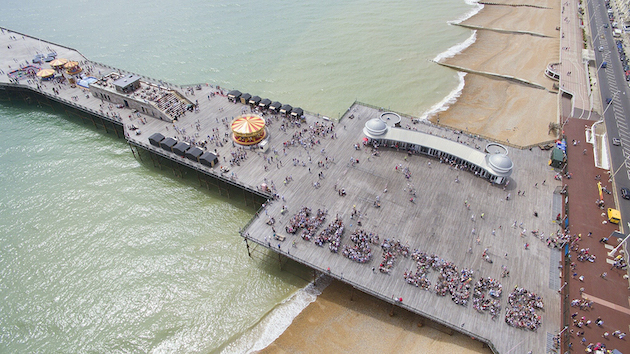 Hastings Pier by dRMM. Photo: Hastings Pier Charity
Hastings Pier by dRMM. Photo: Hastings Pier Charity
The new exhibition at the RIBA Architecture Gallery provides a vital introduction to the few brave public buildings that have found a new purpose amid austerity, thanks to pioneering campaigns by local communities, writes Matthew Ponsford
Making it Happen: New Community Architecture at the Royal Institute of British Architects (RIBA) draws attention to a handful of community-led campaigns that have breathed new life into public buildings, during a decade of political austerity that has devasted the country’s social infrastructure.
While counting the losses of more than 300 libraries, 200 children’s playgrounds, and 50 local museums, the new exhibition spotlights four buildings constructed or rebuilt by local groups, and explores the ever-expanding role of the socially engaged activist-architect.
The exhibition casts a razor-width ray of sunlight in dark times. It tells a slight, swift story of how collaborative design processes have spawned breakout victories at an east London library, a community space in Cumbria, a cabin in southern Scotland, and the Hastings Pier, which won the 2017 Stirling Prize.
All have opened doors in the last decade, thanks to campaigns initiated by community groups. Most familiar will be the pier, whose rollercoaster story began with Victorian vacationing and ran through its inter-war heyday, before it fell into ruin, was gutted by fire in 2010, and eventually purchased by a trust founded by local residents. Its latest twists include a stunning renovation by London-based architects dRMM, who remade the pier as an uncluttered boardwalk – scooping the 2017 Stirling Prize, British architecture’s biggest award, only months before financial trouble forced the charity running the pier into a private buyout.
A film, shot from the pier’s end, forms one atmospheric bookend to the exhibition. Captured from a drone facing outward, towards a horizonless blue-grey expanse of sea, it paints a picture of proud resilience, while pondering the project’s unknown future. The show otherwise consists chiefly of warm-hearted short documentaries by curator Pete Collard and filmmaker Sebastian Ziegler, slotted between village green-style noticeboards, pinned with background information and photos.
In London, the Old Manor Park Library in Newham borough tells a story recognisable to cities and towns across the UK. Opened at the dawn of the 20th Century, the library served the local community for 108 years before being shuttered in 2012, amid devastating cuts to local government funding by the Coalition government.
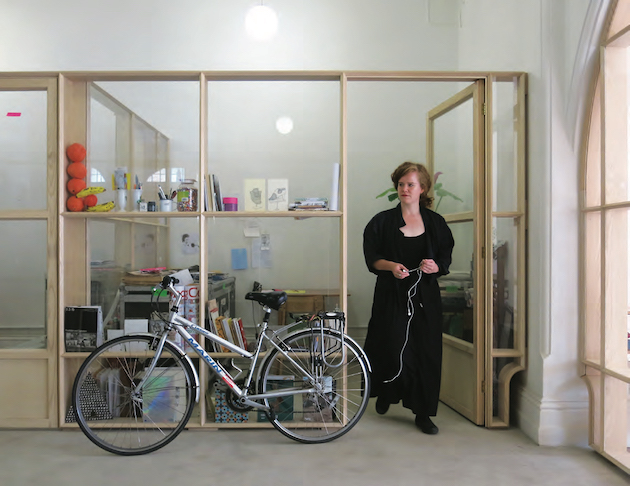 Workshops in Old Manor Park Library by Apparata
Workshops in Old Manor Park Library by Apparata
It owes its second life to a partnership between arts charities Create London and Bow Arts Trust, with backing from Newham Council and the Greater London Authority (GLA). Led by architects Apparata, the Grade II-listed ornate redbrick building has been fixed up, stipped of later architectural additions, and now serves as an incubator for the Rabbits Road Institute, an ‘alternative school of economics’ which aims to expand access to the field.
The stand out display in the exhibition, though, is the Coniston Institute, a former community learning centre in Cumbria, which during the 19th century provided lifelong manual engineering training to local copper miners. Inside the compact RIBA gallery, the floors are paved with painted bricks fired at the institute, which since 2011 has been gradually reopened and expanded by the charity Grizedale Arts, following decades of neglect. Other fruits of local craft and design initiatives are on display, plus examples of the wood-working and copper-working techniques originally taught at the institute and now taught again, by and to local people.
A film shows the exhausting work behind today’s Coniston, which includes a museum dedicated to Victorian critic John Ruskin, patron of the institute in the late 19th century. Ruskin brought generations of students from Oxford University to teach them the importance of manual craft by – among other tasks – having them lay brick roads through the village.
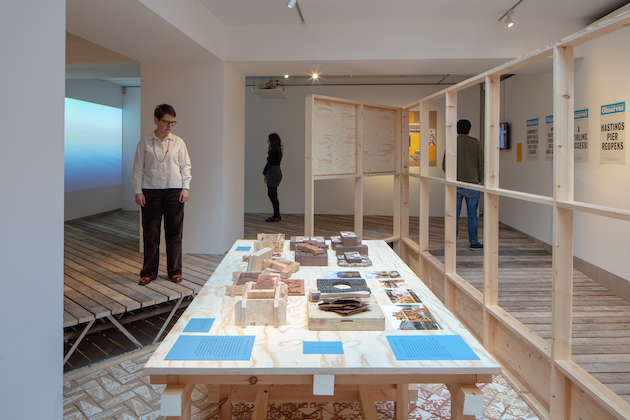 A view of the Consiston display. Photo: Luke Hayes/RIBA
A view of the Consiston display. Photo: Luke Hayes/RIBA
Orchestrated by Takeshi Hayatsu, an architect for London-based practice Hyatsu Architects and lecturer at Central Saint Martins art school, Coniston today realises ambition shared by many contemporary community-led initiatives. Here, the building blocks of local historical context, communal ambition, and creative impetus come together to construct something bigger: a source of enduring pride and hub for practical training, plus a potential launchpad for small-scale local economies. Coniston today is self-financing, turning over around £200,000 a year, in part from sales of local craft and design goods, according to curator Collard.
The revived institute is some evidence that all this community-led development amounts to more than just a sticking plaster for austerity. Even in times when the UK economy boomed, areas like this corner of the Lake District got scant backing from big cultural institutions or central government. Outsiders have generally struggled to tell effective stories about craft histories of working-class communities. Bottom-up design, with architects coordinating in the continual development of the building and its activities, has done better. It’s the kind of discovery that you want to see more of, in the gallery and in the world at large. The sole gripe here is that it would be nice to see more, especially of the community who are, ultimately, the heroes of the exhibition.
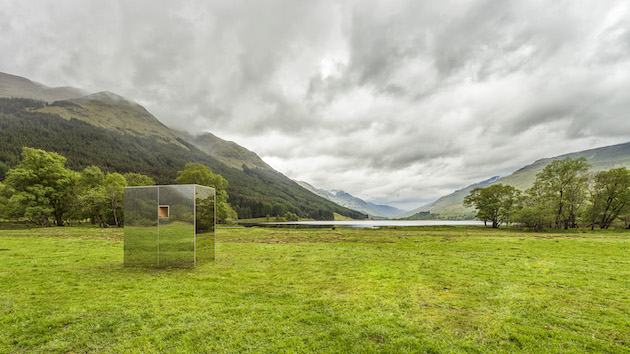 The Lookout Loch Lomond National Park by Processcraft. Photo: Ross Campbell
The Lookout Loch Lomond National Park by Processcraft. Photo: Ross Campbell
The northernmost project, the Lookout, a neat, mirrored cube dropped on the shores of Loch Lomond, seems the slight outlier. A modest cabin built anew to activate its natural surrounding rather than a public hub, it seems a stretch to call it ‘community architecture’ by the standards of the other projects.
In any case, in eking out these few examples, this vital exhibition shows we have far to go before community-led design is considered a model for addressing public sector cuts. Slightly depressingly, a bookshelf located near the exit reminds us how long such ideas have remained the next big thing. A mini-library tracing the percolation of community-led development includes the book version of Bernard Rudofsky’s 1964 exhibition Architecture Without Architects at New York’s MoMA, which heralded one false dawn of community-initiated design. If CHARAS – the New York self-builders who worked with Buckminster Fuller to build geodesic community housing – didn’t make a dent in the developer-led norms of the ’70s, is there any evidence here that a transformative community-led movement can work now?
The short answer is: not really. The show’s activist-architects have seized all tools currently available to them – the Hastings trust secured a Compulsory Purchase Order to wrest the aged structure into public control, and newer powers from the 2011 Localism Act have given residents an opportunity to bid on buildings slated for sale to developers. But more drastic planning and policy interventions are needed to open up space for community-led initiatives.
This is not the exhibition that announces RIBA as the outspoken government critic that some members are willing it to become in the aftermath of the fire at Grenfell. But it would have been nice, at least, to see the exhibition venture a list of demands from architects like dRMM, Takeshi Hayatsu, and Apparata, who know best what is needed to allow this handful of community-led approaches to multiply. Until then, these projects amount to a heroic counter-current amid a still-unfolding catastrophe, rather than anything approaching an answer.
But what’s there is heartening and deserves to be taken seriously. For architects, we now see the radically swollen role that awaits them – in these projects incorporating the role of community co-designer, fundraiser, events programmer, and (in the case of the library) contractor for local craftsmen. Would political actor be too much to add?



